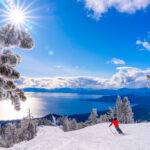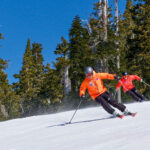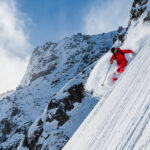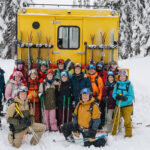
The snowiest place in Korea isn’t the easiest place to reach but it’s certainly the most memorable.
When I told the Korean Air flight attendant that our ultimate destination was the secret little island of Ulleung, a look of wonder crossed her face. “Oooo! A lot of snow. You like adventure!?” she both asked and stated. My wife Ray and I were pleased with her reaction…until she continued with a more serious look. “You will need this for the ferry ride. Very hard,” she said, pointing at an air sickness bag and motioning with her hand and mouth in an animated vomiting action.
About 120km east of the Korean peninsula is an extinct conical volcano that abruptly rises almost 1,000m above the East Sea. The island formed around it, Ulleungdo is one of those “journey’s end” places that you’ll never confuse with any other.
Russia, meanwhile, shares the sea’s northern shores, and more importantly, provides the cold Siberian winds that pick up so much moisture and bring huge amounts of snow—and travellers with ski bags.
In stark contrast, mainland South Korea’s biggest ski resorts typically attract those looking for sunny, cold weather and well-groomed, firm conditions. The high-rises around the modern Pyeongchang region, which hosted the 2018 Olympic Winter Games, couldn’t be a more drastically different environment from Ulleungdo, which receives a share of the storms that dump so much powder on Japan. Without any lifts, apart from a military cable car that doesn’t allow skiers, Korea’s powder island caters to the adventurous skier.

SQUID FOR BREAKFAST
One Korean who has a love of Ulleungdo is Max Kim, a teenage boy trapped in a 40-year-old, ex-Navy SEAL’sbody. Through his travel company Teamax Adventure, Max normally leads biking trips around mainland Korea, but he’s recently branched out with another personal passion, ski touring. Bubbly and animated, inquisitive and fit, Max makes his guests immediately feel like friends.
We met up with Max about 80km south of the Demilitarized Zone (DMZ) that has separated South and North Korea since 1953. We’d skied Pyeongchang’s groomed slopes as a warm-up, and were now ready to join Max for the four-hour drive south to the port city of Pohang, where we sat on the beach in the late afternoon sun, watched surfers take turns on the swell, explored and ate our way through the massive fish market and eventually queued up for the night ferry. Not surprisingly, we were the only passengers with ski bags boarding the near-cruise-ship-sized boat. Having doped up unnecessarily on sea sickness tablets (the seas were about as flat as an Ontario cottage country lake) we quickly drifted off to sleep in our cabin in crisp, white linen sheets, and woke only as we were docking the next morning.

I had to remind myself that
Russia was to the north of us.

Ulleungdo’s rugged and jagged surface area of a little more than 70 square kilometres is shared by roughly 10,000 squid fishermen and pumpkin farmers, half a dozen of whom are backcountry skiers. While the island’s dramatic relief is everywhere, the elevation tops out at Seonginbong Peak, 984m. The coastal road often hugs or tunnels through exceptional cliffsides, with the sea pounding below. Historically a squid fishing island, the industry’s influence is everywhere, from boats on the jetties with hundreds of enormous electric lightbulbs used to attract masses of cephalopods, to restaurant menus offering squid for every meal, to statues and public art.
With such an evocative backdrop, it was painful to look between our phone’s weather apps and the sky. Sometimes Mother Nature just won’t co-operate. After receiving metres of snow in the previous two weeks, temperatures had suddenly warmed up. With only a couple of days to explore, we had no wiggle room to wait out the soupy forecast.
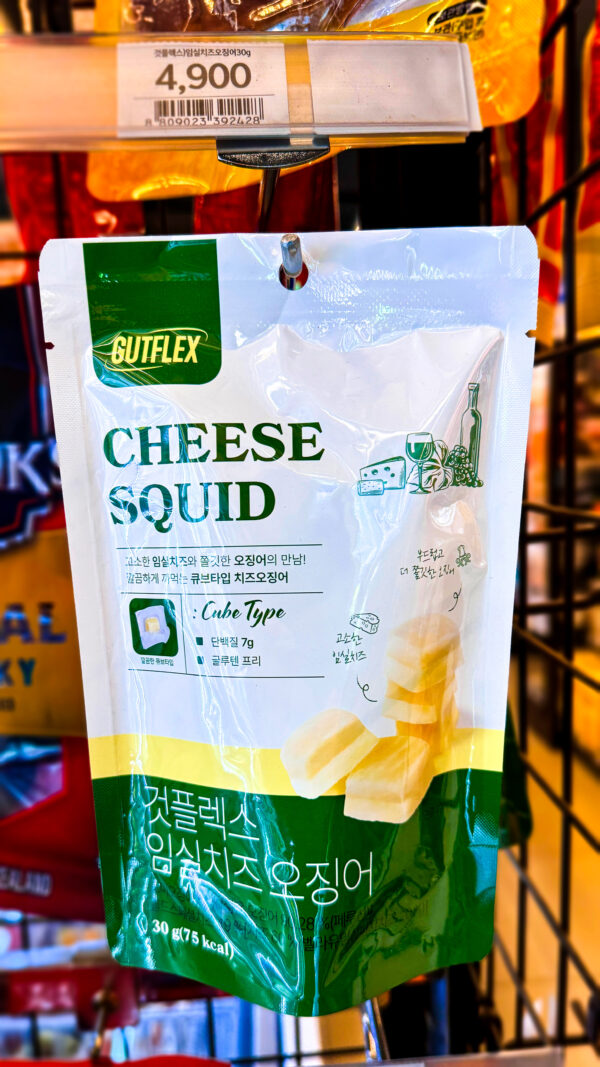



Take care not to get too much bamboo between skins and skis

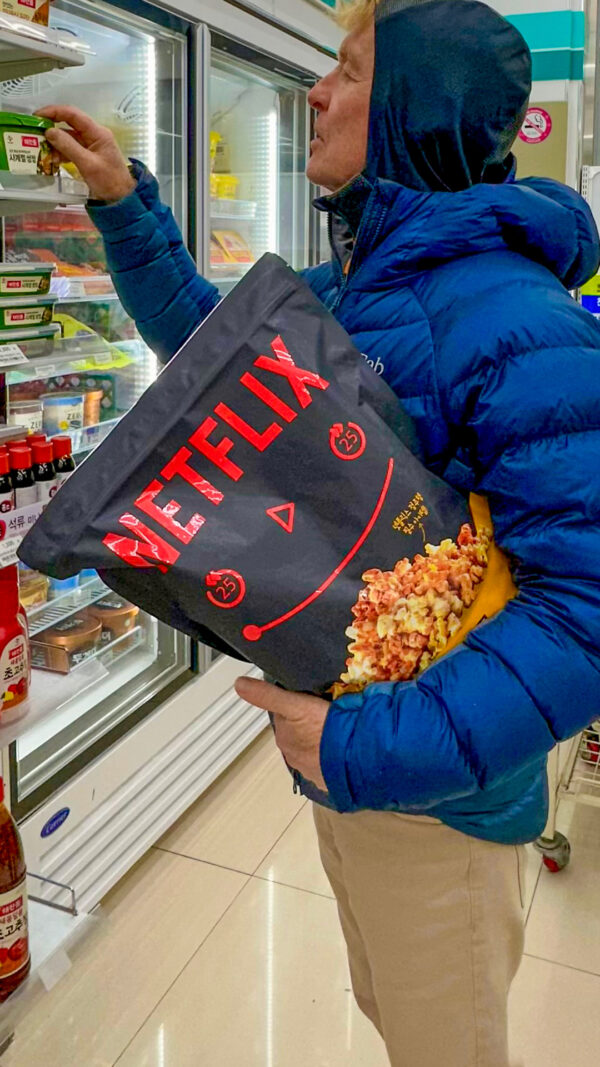
For our skin track snacks, we were pretty sure there was a copyright issue with the big bag o’ Netflix but the Cheese Squid was genuine.
Photos: Ray O’Reilly
Remembering we were Canadian, not fair-weather Euroskiers, we drove to the trailhead, zipped up our shells, applied our skins, released our heels, and with AirPods in and heads down, began the march. Bamboo forests quickly gave way to hardwoods eerily familiar to home—indeed we passed hundreds of tapped maple trees. Curiously, we learned the sap is rarely, if ever, boiled down to make syrup, but simply cleaned, bottled and sold directly as maple water. Testing it en route, I decided it would have to be an acquired taste.
As the drizzle turned to mist and then fog, we passed by an enormous gulley that had been swept clean a few days earlier by a massive avalanche that took huge trees and boulders with it. With moisture-infused heavy snow all around us, we were forced to stick to deep trees, ridge lines and gentle slopes. In Korea’s version of sous
bois, I had to remind myself that Russia was to the north of us, Japan to the south, and North and South Korea were that way. Quite surreal.
From the crater’s edge, we skied down through the trees to the orchards and rich, volcanic-soil farm fields of Nari Basin. Nearby sat traditional thatch-roofed buildings that date back 300 to 400 years.
Like other ski trips where the snow gods haven’t co-operated, we continued to pass by what would have certainly been dreamy lines had we just arrived a week or so earlier. Despite the weather drying up, temperatures cooling, and the sun returning the following day, Murphy’s weather law stated it would probably take a week of snow to reset this secret little powder island to its true reputational glory. By then I would be halfway around the world, stricken with deep FOMO.
FANTASY ISLAND
Whether you’re headed for the gentle, groomed slopes of Pyeyongchang-area resorts like Yongpyong, High1, Vivaldi Park and Alpensia, or you’re more of a Lonely Planet guidebook kind of traveller with your compass set for Ulleungdo, your research begins with the Korea Tourism Organization, visitkorea.or.kr , @ktocanada, and continues with TeaMaxAdventure.com, @TeaMax_Adventure.

